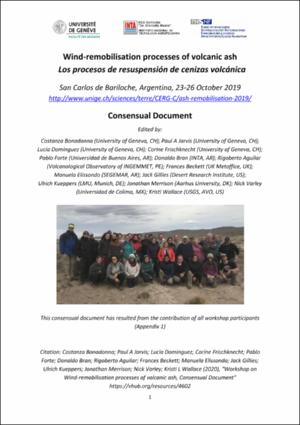Por favor, use este identificador para citar o enlazar este ítem:
https://hdl.handle.net/20.500.12544/2829Ficheros en este ítem:
| Fichero | Descripción | Tamaño | Formato | |
|---|---|---|---|---|
| Bonadonna-Wind-remobilisation_processes_volcanic_ash.pdf | Documento de consenso | 542.47 kB | Adobe PDF | Visualizar/Abrir |
Este ítem está sujeto a una licencia Creative Commons Licencia Creative Commons












